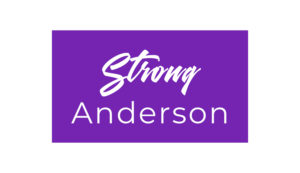Eligibility
You can find out more about bankruptcy here.
Process
There are two means by which an individual can be made bankrupt, either on the petition of a creditor or on the debtor’s own petition.
The petition of a creditor:
Statutory Demand: A statutory demand is normally issued. This gives the individual 21 days to pay in full or negotiate a settlement. If the debt remains unpaid after 21 days the creditors will usually apply for the bankruptcy petition to be heard at Court.
Bankruptcy Petition: A petition is presents against the Individual. A sealed copy of the petition must be served personally on the debtor by an officer of the Court, or by the petitioning creditor or his solicitor (or by a person instructed by them), not less than 14 days before the hearing.
The Hearing: The petition will be heard by the Court who will make the bankruptcy order if they are satisfied that the debt is due and payable and the individual has been given sufficient time to repay the debt.
Bankruptcy Order: A bankruptcy petition that has been heard and approved at court becomes a bankruptcy order.
The petition of the debtor:
If you are of the opinion that you are no longer able to meet your liabilities or that your liabilities exceed your assets, you can present a debtor’s petition to the Court.
You can apply for your own bankruptcy here.
The Hearing: The petition will be heard by the Court who will make the bankruptcy order if they are satisfied that the debt is due and payable and the individual has been given sufficient time to repay the debt.
Bankruptcy Order: Once submitted the Court will make the bankruptcy order if they are satisfied the individual is insolvent.
Effective date
The effective date of the bankruptcy is the date the court approves the bankruptcy order.
Effect of bankruptcy
Following the making of the bankruptcy order, the Official Receiver is appointed as Trustee.
The Official Receiver will arrange a meeting with you to discuss:
- Your financial affairs;
- Why it was necessary for you to be made bankrupt;
- To ascertain all the assets of the individual and
- To ascertain all the people they owe money to
The Trustee will sell your assets to repay creditors.
Where there are assets the Official Receiver may call a meeting of creditors or ask the Department for Economy to appoint an Licensed Insolvency Practitioner to step in as Trustee.
Certain debts are not included in your bankruptcy including:
- Confiscation orders;
- Debts in family proceedings;
- Fines (but not Penalty charge notices in relation to motoring Penalty notice under immigration laws);
- Postponed debts;
- Social Fund loans;
- Statute-barred debts;
- Student loan debts and
- Child maintenance payment arrears.
Duties of the Trustee
- To realise the assets of the individual for the benefit of creditors;
- To investigate the affairs of the debtor and ensure that no bankruptcy offences have been committed and
- To agree creditors’ claims and, if funds are available, make a distribution.
Conclusion of the bankruptcy
After a year of being bankrupt, you’ll usually be discharged from bankruptcy. This releases you from any debts covered by your bankruptcy. It also takes away the restrictions of bankruptcy, unless a bankruptcy restrictions order or bankruptcy restrictions undertaking has been made.
During the bankruptcy period you have a duty to co-operate with the Trustee, for example giving information when asked to do so. If you don’t do this, the official receiver might ask the court to stop your discharge from taking place. This is called suspension of discharge.
If your discharge from bankruptcy is suspended, you’ll be told by the Court whether you have to do anything in order to get your discharge.
Advantages of bankruptcy
- Most of your unsecured debts will be written off, giving you a fresh start;
- Your creditors cannot take any further legal action against you to recover your debts;
- Your creditors must also stop demanding payment, charging interest and adding other charges and
- You won’t receive any further contact from your creditors.
Disadvantages of bankruptcy
- You are no longer in control of your assets;
- You must not obtain credit of £500 or more without first disclosing you are bankrupt;
- You must not carry on business in a different name from that in which you were made bankrupt without telling those people with whom you do business the name in which you were made bankrupt;
- You must not be concerned (directly or indirectly) in promoting, forming or managing a limited company or acting as a director without the court’s permission;
- Some jobs are affected, such as legal or financial roles
- Bankruptcy is recorded on your credit file for at least six years from the date your bankruptcy started and
- Your details will normally remain on the Insolvency Register until three months after you’ve been discharged from bankruptcy.

